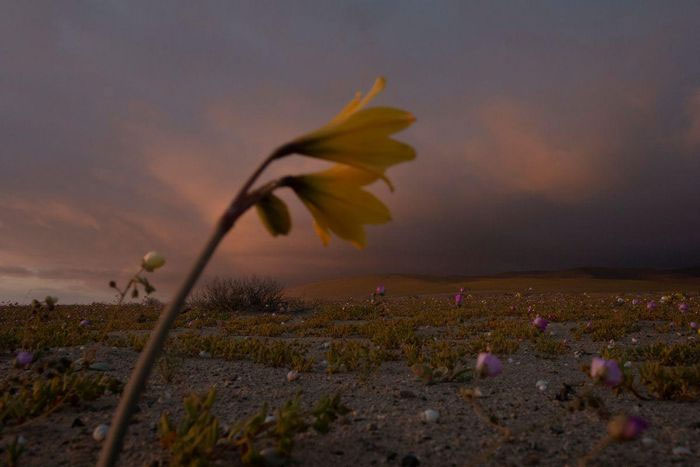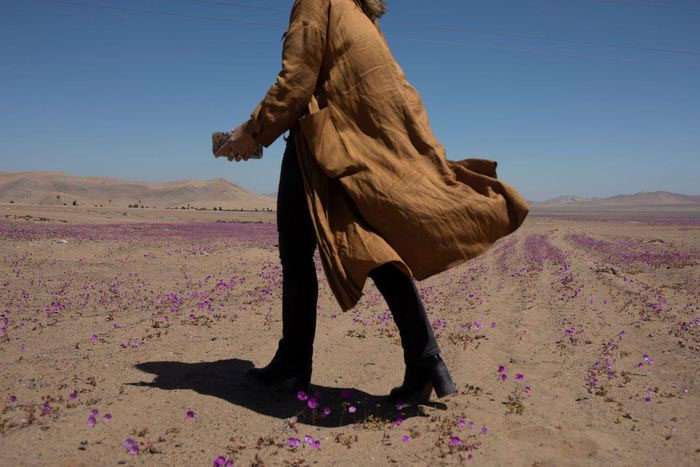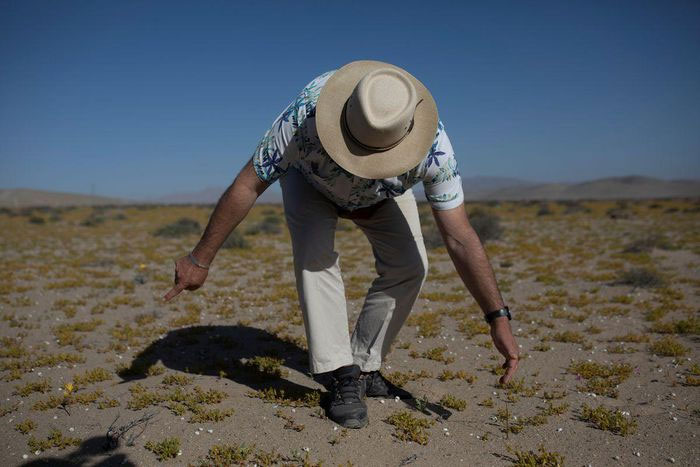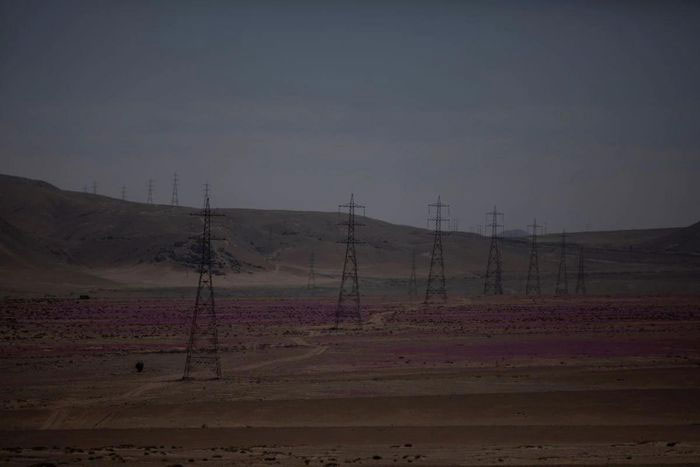In recent weeks, the sand dunes of the Atacama Desert in Chile, the driest desert in the world, have once again been bathed in vibrant colors as flowers bloom, defying the persistent drought.
The stunning landscape of the flowering desert attracts both domestic and international tourists every spring in the Southern Hemisphere. The abundance of blooms depends on the amount of rainfall during the winter.

Blooming flowers in spring on the driest desert in the world near Copiapó, Chile, on October 14. (Photo: Reuters).
Biologist Andrea Loaiza stated: “This is a natural laboratory, as it allows scientists to observe how changes in rainfall affect the diversity of plant life.”

A woman walking in the flowering area of the Atacama Desert. (Photo: Reuters).
The phenomenon of flowering in the desert (in Spanish, desierto florido) is due to seeds and bulbs that can survive the extreme aridity of the Atacama until they bloom in spring.
Gina Arancio, a botanist from the Universidad de La Serena, explained that the seeds and bulbs collectively known as desert seedlings in Chile can endure for many years even without rain.

Biologist Francisco Squeo points to a yellow Ananuca flower, a species endemic to the Atacama Desert. (Photo: Reuters).
This year, the area has been officially designated as strictly protected due to degradation caused by vehicular traffic. The threat of plant trafficking is also present. Therefore, the public is only allowed to enter designated areas.
Biologist Cesar Pizarro noted that this desert is receiving progressively less rainfall over time, except for the years 2007 and 2011.

The Atacama Desert covered in flowers. (Photo: Reuters).
He remarked: “Although the rain is limited to a small area, it is still impressive to witness this in the driest desert on the planet.”
As rainfall continues to decline, scientists are also coming here to study the effects of climate change on local plant species, as well as the ability of plants to survive and adapt to increasingly arid environments.


















































